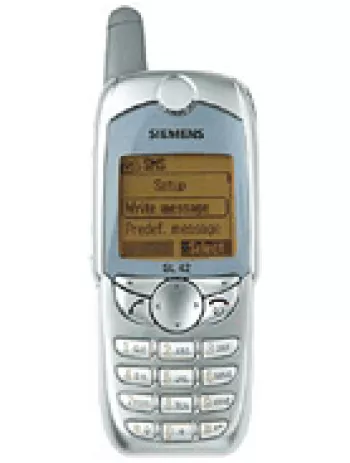
Network and Connectivity
The Siemens C65 was equipped with GSM technology, specifically supporting the 2G bands GSM 900, 1800, and 1900. This allowed for widespread use across various regions. While it supported GPRS Class 10 for basic internet connectivity, it lacked advanced features such as EDGE for faster data transmission. The primary method of connectivity was through infra-red, as it did not possess Bluetooth or WLAN capabilities, a characteristic typical of phones from its era.
Launch and Availability
The Siemens C65 was officially announced in March 2004. Upon its release, it marked a distinct effort by Siemens to penetrate the mid-range mobile phone market. However, this model, like many of its time, has since been discontinued as technology rapidly advanced and demand shifted towards smartphones with more sophisticated capabilities.
Body and Display
The Siemens C65 had compact dimensions of 105 x 45 x 16 mm and a weight of just 86 grams, making it a convenient and portable device. It housed a CSTN display capable of rendering 65,000 colors with a resolution of 130 x 130 pixels. The screen itself wasn't large, adhering to the more compact proportions of early 2000s mobile phones.
Memory and Storage
Internally, the Siemens C65 offered 10MB of storage, which was quite modest even by the standards of its time. It featured a phone book that shared memory with room for 14 fields and the capacity to store 100 dialed, received, and missed calls, a useful feature for keeping track of recent communications. There was no option for external storage via a card slot, which constrained users to the confines of its limited internal memory.
Camera Capabilities
The camera on the Siemens C65 featured a CIF sensor. Although capable of capturing still images, it lacked video recording capabilities. The camera was basic but served its purpose for capturing simple photos, which was becoming a more common feature amongst mobile phones at the time.
Sound and Audio Features
When it came to audio, the Siemens C65 was limited. While it included a loudspeaker, it did not support a 3.5mm audio jack for headphones, requiring proprietary means for audio output. The device supported vibration alerts and users could download polyphonic ringtones, which were a popular personalization feature in the early 2000s mobile devices.
Communication Features
For communication, the Siemens C65 supported traditional SMS along with EMS and MMS, allowing users to send multimedia messages. It included a WAP 2.0/xHTML browser but, given the era and its capabilities, online navigation was quite limited. Java MIDP 2.0 support allowed for some degree of application installation, which was a step towards more versatile mobile functionality.
Battery Life
Powering the Siemens C65 was a removable Li-Ion 600 mAh battery (model EBA-670), offering up to 250 hours of standby time and up to 6 hours of talk time. This battery performance was fairly standard for phones of the time, balancing the device's power requirements with average usage needs.
Miscellaneous Features
The Siemens C65 was available in a distinctive Blue Shadow color, adding a touch of aesthetic appeal to its design. Given the lack of advanced technologies such as GPS or high-speed internet, it focused on delivering reliable basic communication functionalities, playing a significant role in personal communications during its tenure in the market.
Conclusion
The Siemens C65 reflected the technological limitations and advancements of its era. It was a phone that suited the needs of its time, offering essential features with modest specifications. While current devices far outstrip it in terms of capability and design, the Siemens C65 remains a charming example of early 2000s mobile technology, valued for its simplicity and reliability.
Main Features of Siemens C65
- Compact and lightweight design, weighing only 86 g
- CSTN display with 65K colors for clear visualization
- GSM 900 / 1800 / 1900 network support
- GPRS Class 10 for basic internet connectivity
- Infrared port for data transfer
- Internal memory of 10MB for storing contacts and messages
- Support for SMS, EMS, and MMS messaging formats
- Java MIDP 2.0 support for additional applications
- Removable Li-Ion 600 mAh battery providing up to 250 hours of standby time
- Proprietary USB for connectivity
Downsides of Siemens C65
- Supports only GSM network technology; no support for EDGE or 3G networks.
- Lacks expandable storage with no memory card slot.
- Internal memory is limited to 10MB.
- Display is CSTN with only 65K colors, offering low resolution of 130 x 130 pixels.
- Main camera is basic with CIF quality and lacks video recording capability.
- No selfie camera available.
- Does not support Bluetooth or WLAN connectivity.
- Absence of GPS or positioning capabilities.
- No FM radio functionality.
- Proprietary USB port restricts connectivity options.
- Lacks a 3.5mm headphone jack.
- Released in 2004 and has been discontinued, limiting availability and support.


View Also
More Phones
All Rights Reserved +14266 Phones © Mobilawy 2025

























